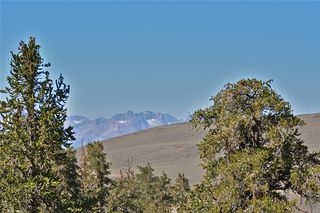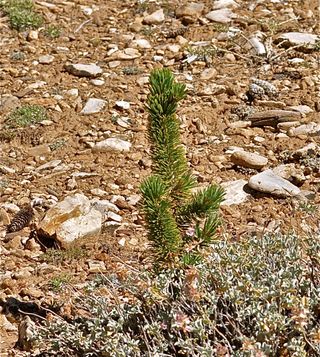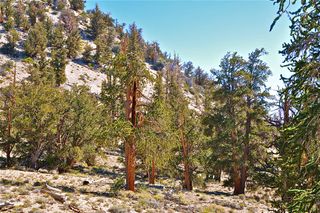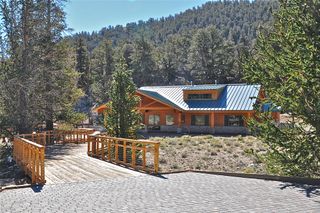Bristlecone Pines: Photos Reveal Some of Earth's Oldest Organisms
Check out these images of the Great Basin Bristlecone Pine, Pinus longaeva, one of Earth's oldest living things. Images of this and other ancient trees are courtesy of Linda & Dr. Dick Buscher.
Ancient sentinels

The Great Basin Bristlecone Pine (Pinus longaeva) is considered to be one of the oldest living organisms found anywhere on Earth. Along with its genetic cousins, the Sierra Foxtail Pine (Pinus balfouriana) and the Rocky Mountain Bristlecone Pine (Pinus aristata), these ancient sentinels stand at the highest elevations of the Rocky Mountains, just below the tree line. They are scattered across high, mountain regions of the states of California, Nevada, Arizona, Utah, Colorado and New Mexico.
A harsh upbringing

Great Basin Bristlecone Pines are most common along the eastern edge of the majestic Sierra Nevada Mountains of eastern California and Nevada. Here growing conditions are extreme with high winds, short growing seasons and many months of freezing temperatures. Yet even in such harsh conditions, the slow-growing Great Basin Bristlecone Pine can grow to a height of over 50 feet (16 meters), with a trunk diameter of 145 inches (368 centimeteres) and reach an age of over 5,000 years.
Energy-saving needles

The needles of the Great Basin Bristlecone Pine have a blunted end and are a deep, yellow-green in color. They are found in groupings of five and are 1 to 1.5 inches (2.54 to 3.81 cm) in length with a bottlebrush appearance. These needles are unique in that they live upwards of 30 years, thus allowing the tree to conserve energy by not having to reproduce new needles. Both male and female cones are found on the same tree. Shown here are the rust-colored male cones that in mid-summer release clouds of yellow pollen to fertilize the female cones.
Sign up for the Live Science daily newsletter now
Get the world’s most fascinating discoveries delivered straight to your inbox.
Slow to mature

Unlike most members of the conifer family, the female bristlecone pine cone takes two years to develop and produce viable seeds. Shown here at the tip of the branch is a small, dark-purple cone just beginning the two years' growth to maturity.
Almost ready

A nearly mature cone will be 2.5 to 3.5 inches (6.35 to 8.89 cm) in length and will also be covered with an abundance of glistening sap. The classic characteristic of these cones are the long, sharp hooked spines that are located on the scales of the female cone and give rise to the species name — bristlecone pine.
Energy efficiency

The extreme conditions in which the bristlecone pine naturally live result in a very slow rate of growth. During the short summer months the sapling's energy must go into the production of cones and nutrient reserves for another long, soon-arriving winter. Bristlecone pines only add about 1/100 inch (0.025 cm) of girth each growing season. All of this must quickly occur in an environment that receives only an average of 10 inches (25.4 cm) of precipitation each year.
Adapting to thrive

Bristlecone pines have developed several adaptations that help them survive such a long life. They thrive in soils such as alkaline dolomite and granite that restrict the growth of other plants. They grow in rocky areas with little ground vegetation, which protects them from catastrophic wildfires. Bristlecone pines can lose up to 90 percent of their bark and survive as long as a strip of bark continues to connect their living branches with their underground roots. Finally, bristlecone pine wood is extremely dense and full of resin, which helps fight off disease and harmful insects.
Interesting trunks

Bristlecone pine trees are often multi-trunked and become twisted and gnarled in appearance as a result of the extreme wind and elements in which they grow. The bark of young trees tends to be red-brown in color and covered with thick, irregular grooves and ridges. As the trees grow older, much of the bark and underlying tissue will die back if damaged by storms, drought or fire.
Effects of environment

The dead wood of the bristlecone pine is often smoothed by the elements of ice and wind, creating unique and beautiful landscapes across the high, rugged mountaintops. Since these trees tend to grow at elevations between 5,000 and 10,000 feet (1,500 and 3,000 m), the wind blows almost constantly, drying out what little moisture that falls upon the soil. In some extreme years, a bristlecone pine will not even add a ring of growth.
Long-living and hearty

The Great Basin Bristlecone Pine is thought to be the longest-lived of all sexually reproducing, nonclonal species on Earth. In the White Mountains area of eastern California, many individual trees are known to have lived for over 5,000 years. The density and heavy resin in the wood results in the extremely slow decay of fallen trees. Scientists report that dendrochronological evidence suggests the ancient log seen above died about 1676 CE and was about 3,200 years old when it died.
A place to learn and explore

Visiting an ancient bristlecone pine forest is made easier by traveling to places like the Schulman Grove Visitor Center in the Inyo National Forest some 22 miles east of Big Pine, California. Located at an elevation of 10,069 feet (3,069 m), this USDA Forest Service facility not only protects the ancient forest that surrounds it, but also opens the forest for visitors to learn and enjoy. Two hiking trails allow for a leisurely exploration of the unique land where Great Basin Bristlecone Pine trees dominate the landscape.
A unique view into the past

The bristlecone pine forests of the American West have survived and thrived in their extreme environment for unknown centuries. Some found here sprouted and began to grow before the building of the Great Pyramid of Giza in Egypt. The events of ancient Earth climate events recorded in their growth rings provide scientists with a unique and invaluable view into the past. They are truly one of nature's most amazing of organisms with whom we share the Earth.
Follow us @livescience, Facebook & Google+.
